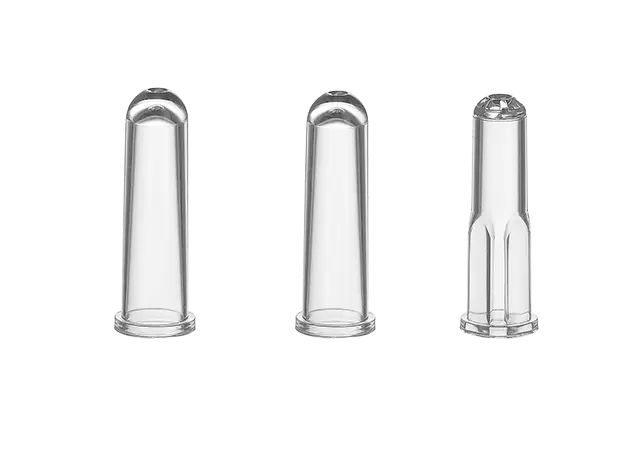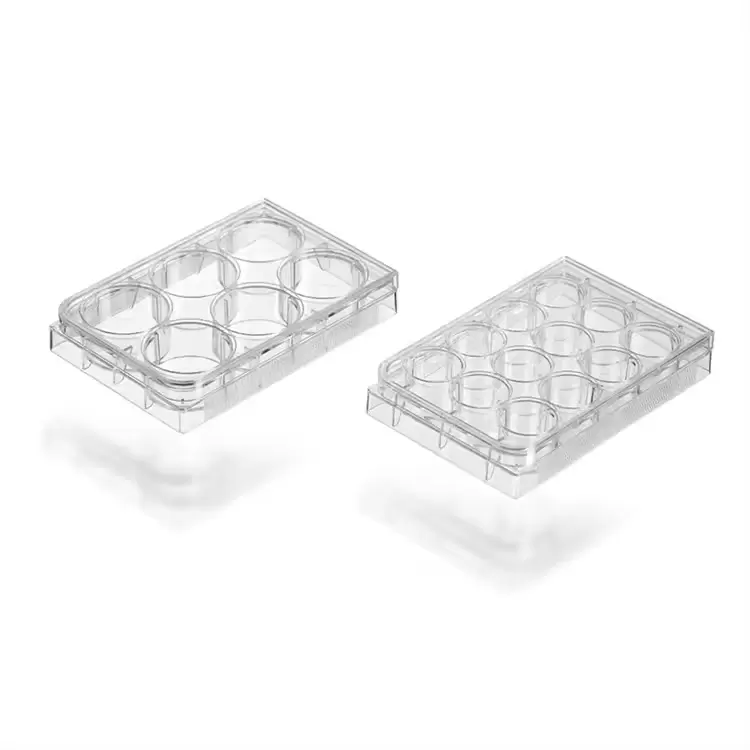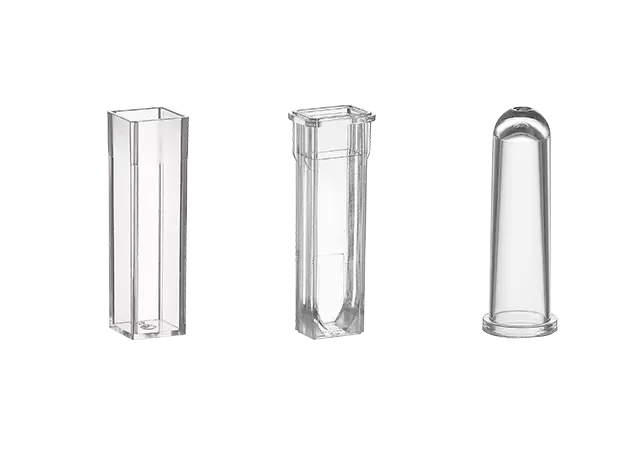Disposable Cuvettes: Essential Components in Modern Analytical Techniques
In laboratory environments, precision and reliability are paramount when conducting scientific analyses, particularly in fields such as chemistry, biochemistry, environmental science, and clinical diagnostics. Disposable cuvettes have become essential components in ensuring accurate results while maintaining high levels of efficiency in the lab. These small but vital tools offer numerous benefits, including preventing contamination, reducing sample handling time, and enhancing the overall workflow of laboratories. In this article, Kangjian will explore the advantages of using disposable cuvettes in laboratories.
What Are Disposable Cuvettes?

A disposable cuvette is a small optical container used in analytical instruments, such as spectrophotometers, to hold samples for light-based analysis. Disposable cuvettes are designed to be used only once, eliminating the need for cleaning between samples. This single-use design ensures that no residual sample material remains in the cuvette, reducing the risk of cross-contamination and making them particularly valuable in high-throughput laboratory environments.
Typically, disposable cuvettes are made of materials that allow light to pass through with minimal interference, making them ideal for spectrophotometric analysis. The most common materials include polystyrene, acrylic, and glass, with each material having its unique advantages based on the intended application.
Advantages of Using Disposable Cuvettes in Laboratories
1. Prevention of Cross-Contamination
One of the primary reasons for using disposable cuvettes in laboratory settings is to prevent cross-contamination. Cross-contamination occurs when residual sample material or reagents from a previous experiment affect the results of subsequent tests. In many analytical procedures, even the smallest amount of residual material left behind from a previous sample can compromise the integrity of the entire testing process. Disposable cuvettes offer a simple solution by being designed for single-use only, ensuring that there is no residual contamination from previous samples. This is particularly important in fields such as clinical diagnostics, where cross-contamination could lead to incorrect diagnoses, or in pharmaceutical research, where even trace amounts of contaminants could affect drug development processes.
Moreover, disposable cuvettes can be easily disposed of, eliminating the need for costly and labor-intensive cleaning procedures. In labs with high throughput, such as those in clinical diagnostics or pharmaceutical testing, this can significantly reduce the time and resources spent on cleaning reusable cuvettes. In some cases, cleaning can introduce microscopic scratches or residue that can affect the optical clarity of the cuvette, compromising measurement accuracy. With disposable cuvettes, this risk is eliminated, leading to more reliable results.
2. Convenience and Time-Saving
The disposable nature of cuvettes also brings a major time-saving benefit. Laboratories no longer need to worry about cleaning, drying, and maintaining cuvettes between uses. This not only reduces the amount of time spent on post-sample processing but also decreases the likelihood of human error in the cleaning process. The time savings associated with disposable cuvettes are particularly evident in labs that perform high-throughput testing, where each sample requires analysis to meet tight deadlines. By simply discarding the cuvette after each use and replacing it with a new one, laboratory technicians can focus on higher-value activities, such as data analysis or the next phase of research.
Additionally, there is no need to invest in specialized cleaning agents or equipment for cuvettes, which could otherwise lead to additional costs. Disposable cuvettes allow for greater flexibility in laboratory workflows, particularly when working with multiple reagents, samples, or testing protocols, ensuring that operations run smoothly and efficiently.
3. Cost-Effectiveness
Although disposable cuvettes are single-use, they are typically less expensive than reusable cuvettes. Reusable cuvettes often require costly maintenance, such as cleaning agents, labor-intensive cleaning procedures, and potential replacement of cuvettes due to damage from frequent cleaning. Disposable cuvettes offer an affordable alternative, especially for laboratories with high sample throughput. This is particularly true for industries where testing occurs frequently, such as clinical diagnostics or environmental monitoring.
Laboratories can purchase disposable cuvettes in bulk, significantly reducing per-unit costs. The savings are not only seen in the cuvettes themselves but also in the reduction of labor costs associated with cleaning and handling reusable cuvettes. In many instances, the overall cost of disposable cuvettes will be lower than the cost of maintaining and cleaning reusable alternatives, especially when considering factors such as the labor involved in cleaning and the possibility of cuvette degradation over time.
4. Improved Accuracy
Disposable cuvettes are designed for precise light transmission, which enhances the accuracy of spectrophotometric measurements. The optical properties of disposable cuvettes, particularly those made from materials like acrylic and glass, ensure minimal light scatter or interference, allowing spectrophotometers to obtain accurate readings of absorbance or transmittance. This precision is essential for scientific analyses, where even small inaccuracies could significantly alter experimental results.
Manufacturers of disposable cuvettes typically produce them under stringent quality control conditions to ensure consistency in each cuvette's optical properties. This consistency ensures that every analysis conducted using disposable cuvettes will yield accurate and reliable results. Laboratories working in high-precision fields, such as pharmaceutical research, environmental testing, and clinical diagnostics, will find that disposable cuvettes provide a dependable solution for their measurement needs.
Disposable cuvettes have become a cornerstone of modern analytical techniques due to their numerous advantages, including prevention of cross-contamination, cost-effectiveness, convenience, and accuracy. Whether in clinical diagnostics, pharmaceutical research, environmental testing, or food and beverage analysis, these single-use cuvettes provide laboratories with a reliable tool to achieve precise and reproducible results. With the right selection of material, size, and compatibility, laboratories can optimize their workflow and ensure high-quality analysis in a variety of scientific fields.




